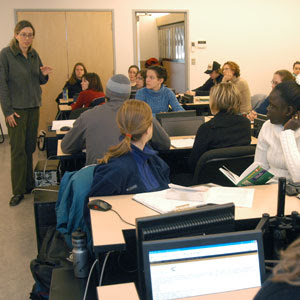We have choose a website for ESL and EFL learners as High School students. The website we have chosen is
www.manythings.org . In general the website was great it involved all the skills that each learner need it in order to learn new language. In addition, each skill has a clear picture to the learner. So, if we want to talk about the usability and accessibility we can say that was easy to access and from the homepage you can know what this site offer for you, but there was one negative point about the homepage which is the design, it was not interesting enough to attract the learner to go in deeply. Another thing to evaluate was the text; it was excellent the size, style, colors and organization of the links were easy to the reader and well organized. Also, the graphics were matching the themes and the exercises of each skill, which will play an important role in helping the learner to understand. One more thing about the website was the links. They were organized it a way that made it easy to move from page to page and the titles were clear because under each topic you would find subtitles that will help narrowing your search. All these points were objective criterion, but if want to talk about the subjective criteria, we will evaluate how well was the website for the students. For their level in English, the site is excellent for them because it used clear and easy words in the texts and instructions and culturally was appropriate. In addition, the contents were interesting like what we found in reading section. They chose interesting topics and stories. These contents will help a lot in our curriculum and lessons. As a result, we found that the website was beneficial, interesting, and easy to our students and they can use it alone without help of the teacher, moreover, it covers all the skills we need.

Another website is
http://www.usingenglish.com. The website is presented to be helpful for learners and the teachers. It covers grammar and gives references to irregular verbs, phrasal verbs, idioms, and provide useful links and information. The website is simple and neatly categorized. They have lots of links to quizzes and they divided it to, beginner, and intermediate learners. The words used are easy to understand and will not be a major problem to learners. The down side of this website are the overall design, usability, and the presentation of the information. The overall design isn’t welcoming and will not attract students. If they see the site for the first time they will be intimidated to browse it and get information from it. The usability in the website is very poor. its not that easy for a beginner to understand what he/she should do when he start going through the pages. The presentation of the information also needs improvement cause not all learners will get the information by simplifying the grammar as they did. They need to further the explanation of grammar with more examples to make learners understand better. With all that, we concluded that the site will not be very helpful for intermediate level rather it will benefit teachers more.




